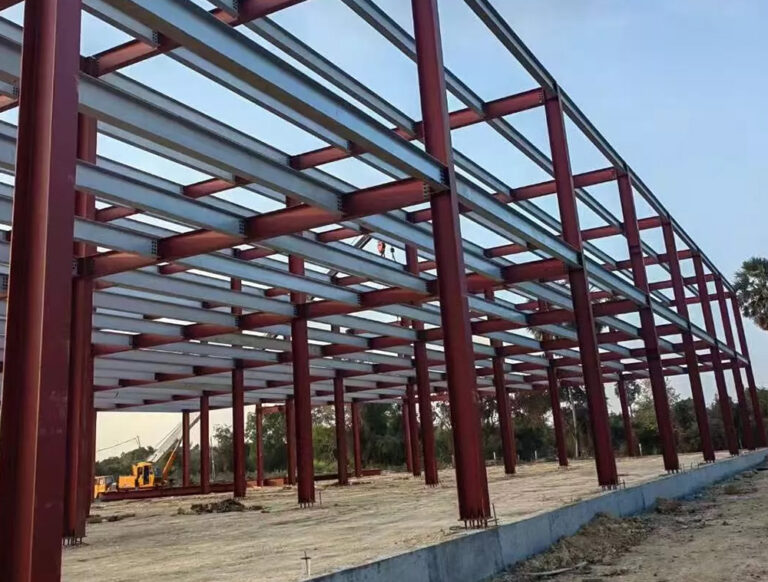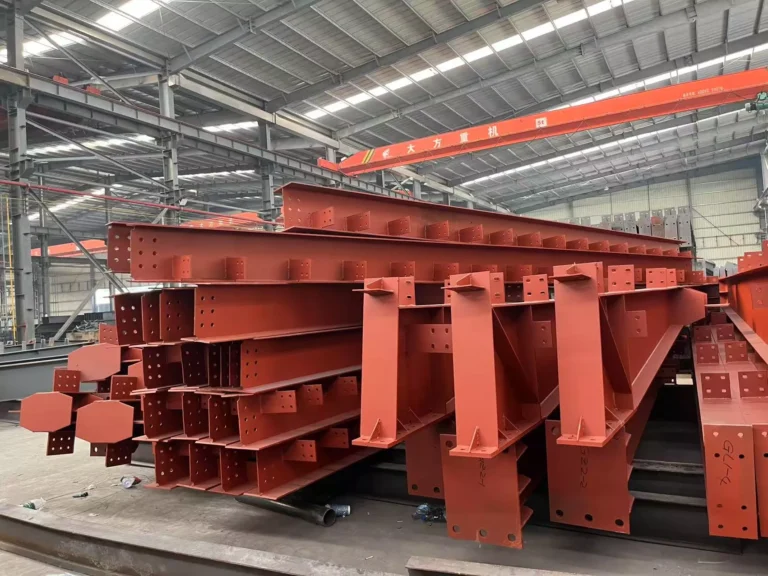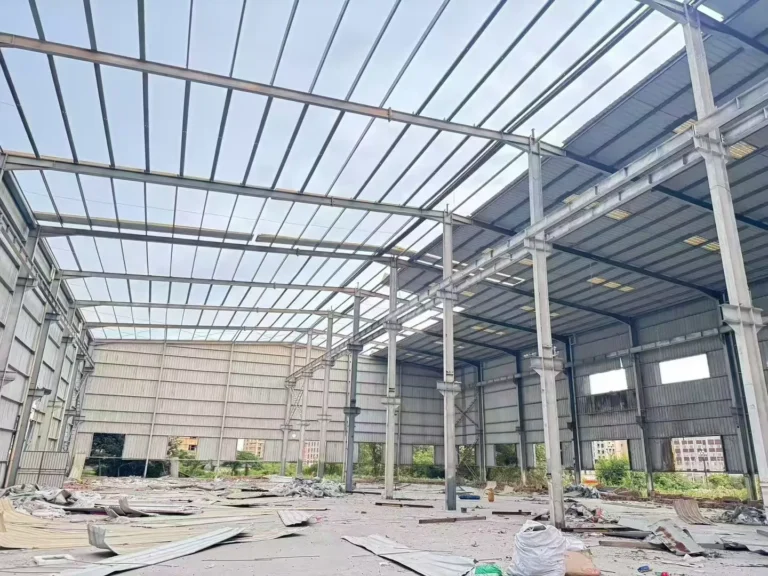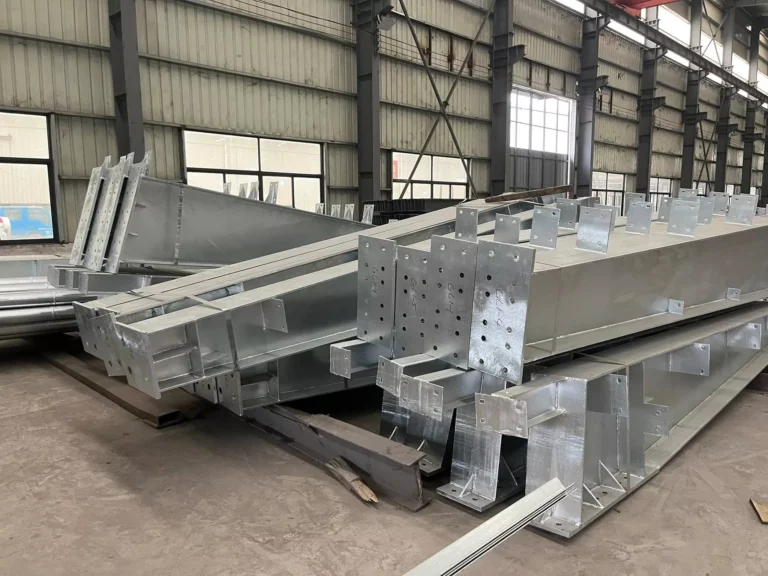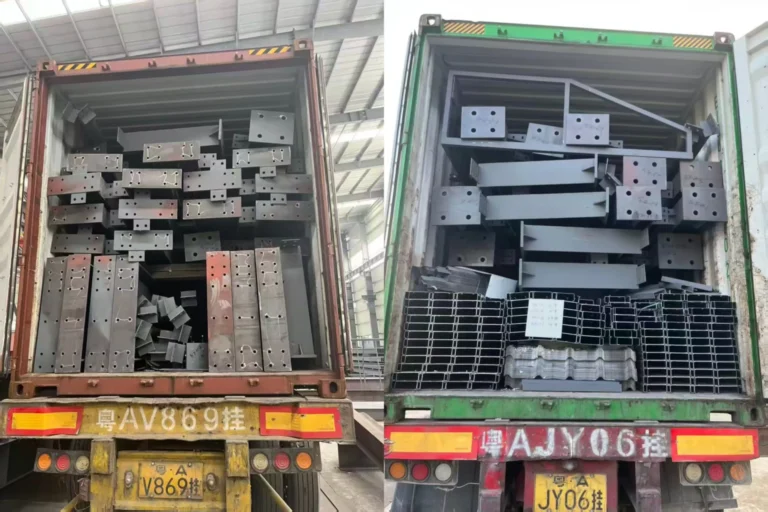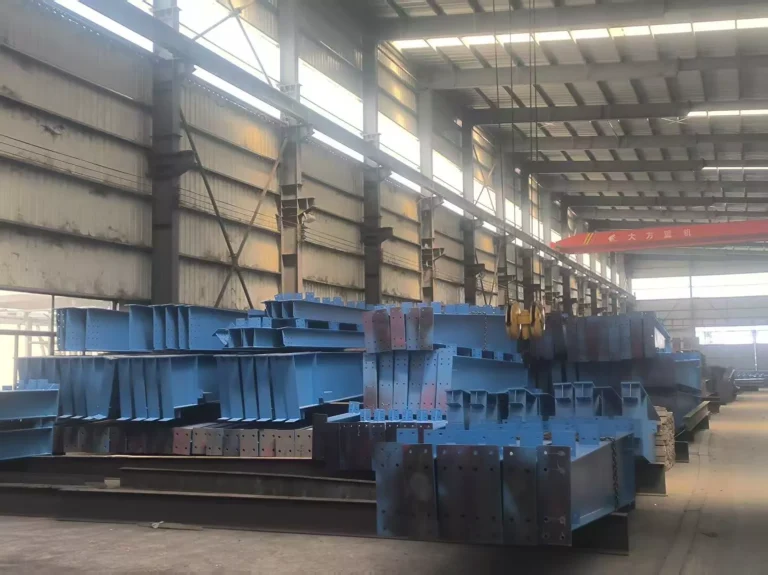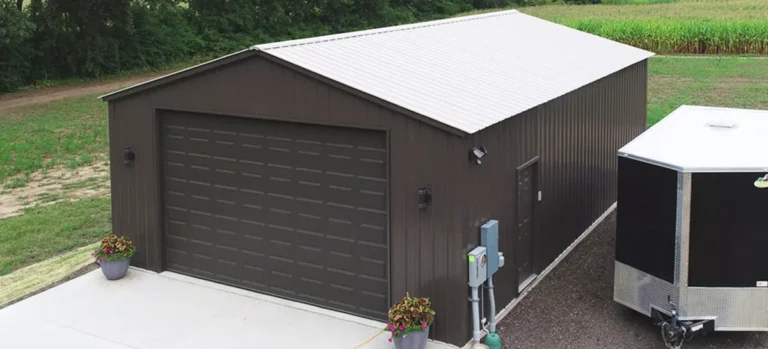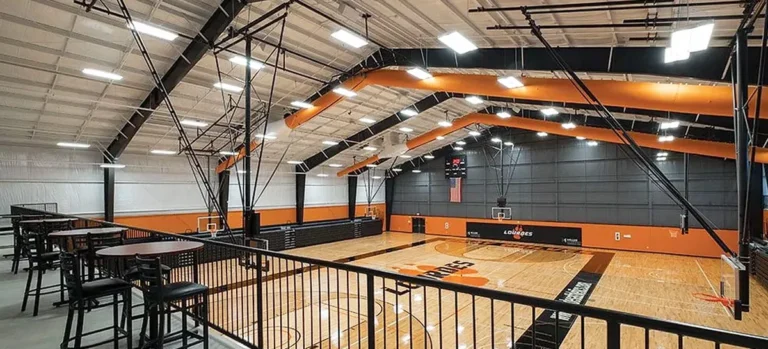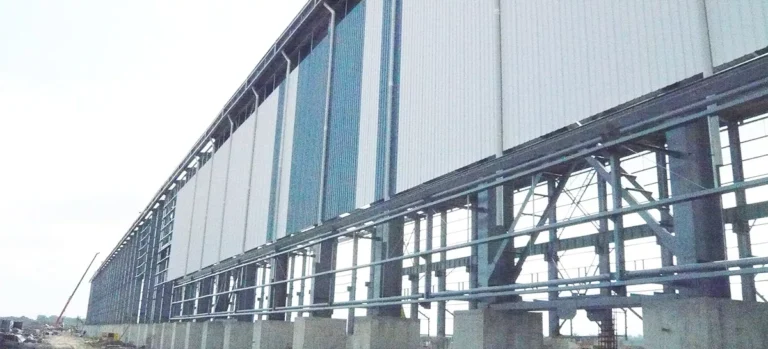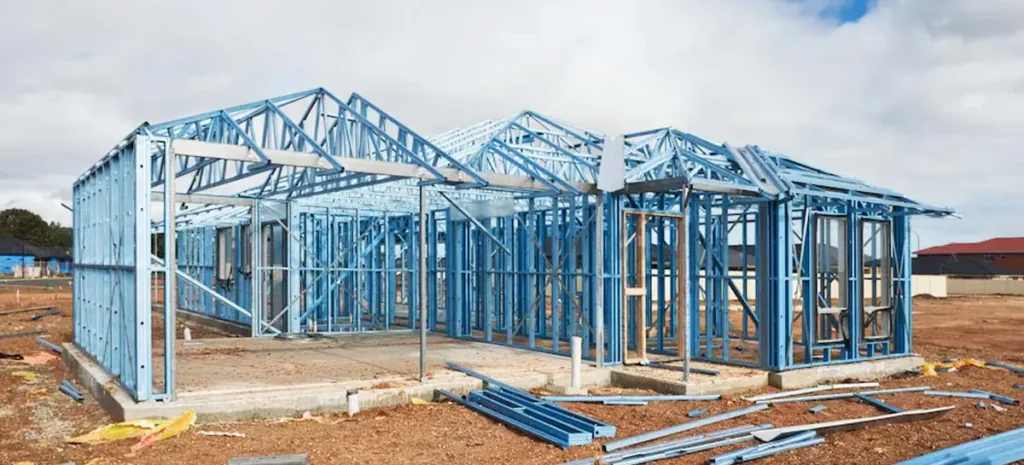
When it comes to building workshops and warehouses, selecting the right construction material is crucial for ensuring long-term durability, cost-effectiveness, and operational efficiency. Among the most common materials used for industrial buildings are steel and concrete. Both materials offer distinct advantages, but choosing the right one depends on factors like budget, site conditions, the type of work being done, and future scalability.
In this article, we’ll compare steel and concrete in the context of industrial workshop and warehouse construction to help you make an informed decision about which material is better for your next project.
1. Durability and Strength
Steel:Steel is well-known for its strength-to-weight ratio. A steel building frame can withstand extreme weather conditions, including heavy snow loads, strong winds, and even seismic activity. Steel structures are resistant to rust, mold, and pests (like termites), making them a durable choice for warehouses and workshops that require long-lasting protection for goods and equipment. Steel also does not crack or degrade over time, which is common in concrete buildings, particularly when exposed to harsh weather or environmental changes.
Concrete:Concrete is also a very durable material, particularly when reinforced with steel rebar or mesh. Concrete structures are solid and heavy, providing a stable foundation that is resistant to fire and environmental damage. However, over time, concrete can crack due to expansion and contraction from temperature changes or moisture infiltration, which can lead to structural issues. Concrete also requires more maintenance to keep up its integrity, especially in harsh climates.
Verdict:Steel generally outperforms concrete in terms of long-term durability. Steel is resistant to more types of damage (rust, termites, etc.), and its ability to withstand heavy loads without cracking is a major advantage for workshop and warehouse structures.
2. Speed of Construction
Steel:One of the standout benefits of steel construction is the speed at which buildings can be completed. Steel structures are often prefabricated in a factory before being delivered to the construction site, where they are assembled quickly and efficiently. This reduces the time spent on-site and minimizes labor costs. Because steel frames are designed for quick assembly, you can expect faster construction timelines, meaning you can start using your warehouse or workshop sooner.
Concrete:Building with concrete typically takes longer than with steel. While concrete foundations can be poured and set quickly, the overall construction process, including the curing time for concrete and additional work required for formwork, can take longer than the steel assembly process. Concrete structures also require more labor-intensive processes, which can increase both the timeline and costs.
Verdict:Steel is faster to construct, which leads to reduced labor and quicker project completion. This can be particularly beneficial for businesses looking to get their operations running as quickly as possible.
3. Cost-Effectiveness
Steel:While the initial material cost of steel can be higher than concrete, the overall costs of building a steel structure may be lower due to the faster construction time and reduced labor requirements. Steel also requires less long-term maintenance, which lowers ongoing expenses. Furthermore, the efficiency of prefabrication means that there is less material waste, which can help keep costs down.
Concrete:Concrete generally has a lower upfront material cost, especially in areas where concrete is readily available. However, the construction process is more labor-intensive, and the need for more curing time and specialized equipment can increase overall costs. Additionally, concrete structures may require more long-term maintenance, such as sealing and repairing cracks, which can add to the overall cost of ownership.
Verdict:Steel tends to be more cost-effective when factoring in labor, construction time, and long-term maintenance. However, in regions where concrete is more abundant and cheap, concrete may be a more affordable option for some.
4. Design Flexibility
Steel:Steel is highly versatile when it comes to design. It allows for greater flexibility in terms of space planning because steel frames can support large spans without the need for internal columns. This creates open, unobstructed floor space, which is crucial for warehouses and workshops that require high ceilings and expansive areas for storage or equipment. Steel can also accommodate customized designs more easily, with options for height, width, and layout tailored to your specific operational needs.
Concrete:Concrete is a strong material, but it has its limitations in terms of design flexibility. Concrete structures are typically more rigid and require additional support beams and columns for larger spans, which can restrict the interior layout of the building. Concrete also requires more extensive planning for foundation work and internal support systems, which can limit overall design options.
Verdict:Steel offers superior design flexibility, especially for warehouses and workshops that need wide-open spaces and customizable layouts.
5. Sustainability and Environmental Impact
Steel:Steel is one of the most sustainable building materials available. It is 100% recyclable, meaning that any steel used in construction can be recycled and repurposed without losing its strength or quality. Modern steel production techniques, such as electric arc furnaces, use less energy and have a lower environmental impact than traditional methods. Steel buildings are also energy-efficient, with the option to integrate features like insulation, natural lighting, and reflective coatings that reduce energy consumption over time.
Concrete:Concrete production, on the other hand, has a larger environmental footprint due to the energy-intensive process of cement production. Cement is responsible for a significant portion of global CO2 emissions, making concrete a less sustainable option overall. However, concrete is durable and can have a longer lifespan, which reduces the need for replacement. Innovations such as “green” concrete, which uses recycled materials, are being developed to mitigate environmental concerns, but they are not as widely used as steel.
Verdict:Steel is generally considered more environmentally friendly due to its recyclability and lower carbon footprint during production. For sustainability-conscious projects, steel is the better option.
6. Maintenance Requirements
Steel:Steel buildings require minimal maintenance. While steel can be susceptible to rust if exposed to moisture, regular painting and protective coatings can prevent corrosion. Other than this, steel buildings require little ongoing attention, making them a low-maintenance option over time.
Concrete:Concrete buildings, on the other hand, require more frequent maintenance. Cracking and degradation over time due to weathering, water infiltration, or structural settling is a common issue. Concrete may need to be repaired or sealed periodically to maintain its integrity and prevent water damage.
Verdict:Steel requires less maintenance than concrete, which can reduce long-term costs and labor involved in upkeep.
7. Fire Resistance and Safety
Steel:Steel is naturally fire-resistant and does not burn, unlike wood or other materials. However, it can lose strength when exposed to high temperatures for extended periods. Fireproofing coatings and materials can be applied to steel buildings to improve fire resistance and safety.
Concrete:Concrete is non-combustible and provides excellent fire resistance. It can withstand high temperatures without compromising structural integrity. However, concrete can also crack under intense heat, which may weaken its overall safety in fire scenarios.
Verdict:Both materials offer fire resistance, but concrete may offer a slight advantage in terms of sustained exposure to heat. Steel can be easily fireproofed for additional protection.
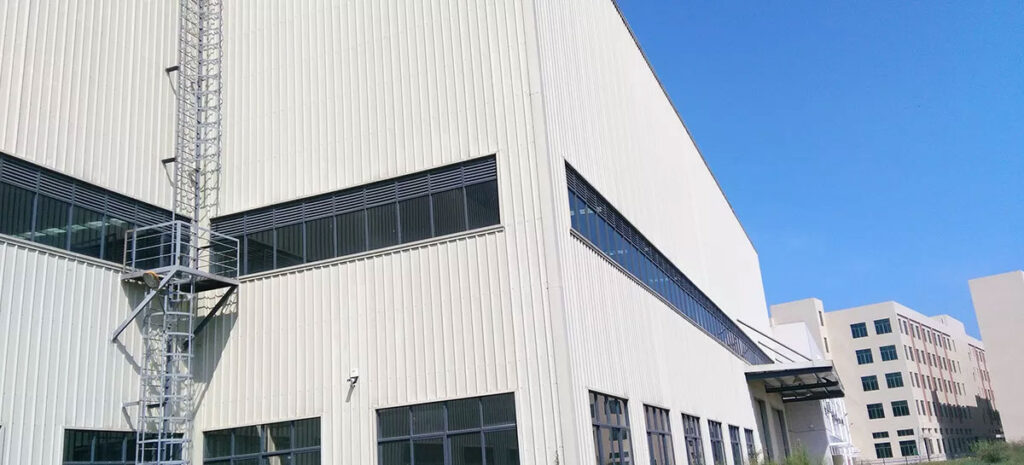
Conclusion
Choosing between steel and concrete for your workshop or warehouse depends on various factors, including budget, design requirements, environmental concerns, and timeline.
- Steel is the preferred choice for those seeking design flexibility, faster construction, and a more sustainable and low-maintenance building.
- Concrete may be better suited for projects where initial cost is the primary concern, or where the thermal mass properties of concrete are beneficial for temperature control.
At Ganyo Steel Structure, we specialize in providing durable and cost-effective steel building solutions. Whether you need a workshop, warehouse, or other industrial facility, we can help you design a steel structure that meets your exact needs. Contact us today at lizzy@ganyosteelbuilding.com to learn more about our services and get started on your next project.

